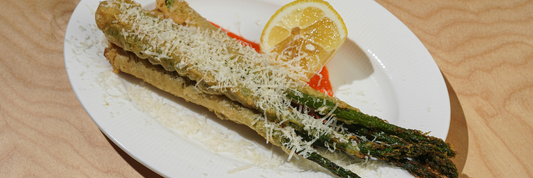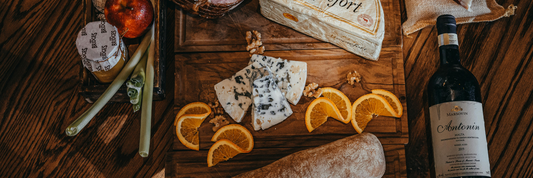Sushi has long been a beloved culinary art form in North America, but in recent years, diners have shifted their focus from casual sushi rolls to the refined tradition of omakase. This Japanese dining style, which literally means “I leave it up to you,” is about trusting the chef to curate a personalized sushi journey.
For restaurant owners in cities like Toronto, Vancouver, and New York, understanding why omakase is trending is more than just following hype it’s about recognizing how consumer behavior is changing. Diners today crave authenticity, exclusivity, and memorable experiences that go beyond just eating.
At Kimecopak, we’ve seen first-hand how omakase restaurants not only attract discerning customers but also elevate their brand reputation. And while omakase is traditionally a dine-in experience, the shift toward premium takeout packaging like compostable trays, kraft sushi boxes, and eco-friendly bowls shows how presentation and sustainability can extend this elevated dining experience into delivery.
-
The History and Philosophy Behind the Art of Japanese Sushi
- Why Packaging Impacts First Impressions in Sushi Takeouts
- How to Store and Transport Sushi without Compromising Freshness
What Is Sushi Omakase?

At its heart, omakase is about trust and artistry. The diner entrusts the chef to create a sequence of sushi pieces usually starting with lighter flavors and progressing to richer, more complex bites.
- Origins in Japan: Omakase dates back to the Edo period in Tokyo, when sushi chefs began curating meals based on seasonal ingredients and the catch of the day. It was never about ordering a menu item it was about the chef’s craftsmanship.
- Cultural Meaning: Omakase is more than just food it’s an intimate performance. Diners witness the chef’s knife skills, ingredient selection, and plating artistry in real time.
- Key Difference: Unlike à la carte sushi, where customers choose rolls or nigiri, omakase removes decision-making and emphasizes a guided, elevated dining journey.
For North American diners who value authenticity and cultural immersion, this tradition is irresistible. It transforms sushi into a storytelling experience, where every bite is intentional and meaningful.
Market Trends Driving Omakase Popularity

Why is omakase suddenly booming in North America? The answer lies in a combination of market data, generational dining preferences, and the evolving definition of luxury.
1. Experiential Dining Is on the Rise
According to Deloitte’s 2023 Food Service Trends Report, over 60% of North American diners say they prefer restaurants that offer unique experiences rather than just meals. Omakase fits this perfectly it’s not just dinner, it’s an event.
2. Millennials and Gen Z Demand Authenticity
Younger diners are driving demand for authenticity in food. A survey by Technomic (2022) found that 70% of millennials and Gen Z consumers prefer restaurants that showcase cultural heritage and storytelling. Omakase offers exactly that authentic Japanese dining curated with seasonal ingredients.
3. The Sushi Market Is Expanding Rapidly
- The global sushi market was valued at $22.5 billion in 2022 and is projected to reach $34.6 billion by 2027 (Fortune Business Insights).
- In North America specifically, sushi restaurant growth has been steady, with Canada’s sushi market expected to grow by 5.1% CAGR from 2023 to 2028 (IBISWorld).
This growth isn’t just about volume it’s about premiumization. Diners are willing to pay more for specialized sushi experiences like omakase.
Why Diners Value Omakase Experiences

So, what makes omakase so appealing compared to a regular sushi dinner? The answer lies in how diners perceive value through personalization, freshness, and exclusivity.
Personalization and Exclusivity
Omakase gives diners a sense of being part of something intimate and exclusive. With limited seating and chef-curated menus, guests feel they are receiving a once-in-a-lifetime dining experience. For restaurant owners, this also allows premium pricing models that justify higher operating costs.
Freshness Above All
Since omakase relies heavily on seasonal and daily catches, it ensures only the freshest fish is served. Diners in Canada and the U.S., where food safety and freshness are top concerns, find reassurance in this transparent, chef-led approach.
Social Media Influence
Let’s not forget the role of Instagram and TikTok. Search “#omakase” and you’ll find over 1.2 million posts on Instagram alone (as of 2025). The visual appeal of omakase chef plating sashimi in real time, delicate garnishes, dramatic plating makes it inherently shareable, boosting restaurant visibility.
Regional Sushi Trends: What’s Hot in Toronto vs. Vancouver vs. NYC
Omakase in North America: Toronto, Vancouver, and NYC

While omakase shares its Japanese roots across regions, its expression in different North American cities reflects unique cultural dynamics.
- Toronto: Multiculturalism shapes Toronto’s omakase scene, where fusion rolls meet traditional Japanese artistry. Many chefs incorporate Canadian seafood such as Atlantic salmon and lobster into their menus.
- Vancouver: With its strong focus on sustainability, Vancouver omakase restaurants emphasize Ocean Wise-certified seafood, appealing to eco-conscious diners who want both premium taste and ethical sourcing.
- New York City: NYC is home to some of the most experimental omakase spots. From luxury $300+ omakase dinners to creative takes like sushi burrito-inspired courses, the city blends tradition with avant-garde flair.
For restaurant owners, these regional trends matter. Understanding what resonates in each market is the key to capturing customer loyalty.
The Sustainability Factor: Omakase and Eco-Friendly Dining
As diners in North America become more conscious of their environmental footprint, the conversation around sustainable dining practices has extended into the world of sushi omakase. Premium restaurants are now paying attention not only to the quality of the fish but also to where and how it is sourced.
- Sustainable sourcing of seafood: Many omakase chefs partner with suppliers who prioritize traceability and responsible fishing. This ensures that diners enjoy fresh, high-quality sushi without contributing to overfishing.
- Eco-conscious packaging and serving methods: Takeout omakase boxes have also gained traction, especially after the pandemic. Here, the role of sustainable packaging becomes critical. Brands like Kimecopak are supporting restaurants with eco-friendly sushi trays, paper-based packaging, and compostable containers that maintain presentation quality while minimizing waste.
- Consumer preference shift: According to a 2023 Nielsen report, over 73% of North American diners said they prefer restaurants that align with sustainability values. This makes eco-friendly omakase experiences even more appealing to the modern diner.
For sushi chefs, the commitment to sustainability is not just about reducing plastic it is about honoring the philosophy of omakase: respect for nature, respect for the diner, and respect for every ingredient served.
How North American Culture Shapes Omakase

The rise of omakase in North America is not just about Japanese culture crossing oceans; it’s also about how it adapts to local lifestyles and expectations.
- Personalization meets exclusivity: North American diners often value customization. Omakase balances this by offering personalized experiences within the boundaries of the chef’s expertise.
- The rise of experiential dining: Millennials and Gen Z, who make up a large portion of the dining-out demographic, are more likely to spend on unique experiences rather than material goods. Omakase fits perfectly into this trend, offering not just a meal, but a story.
- Blending tradition with innovation: Many chefs in New York, Toronto, and Vancouver are blending classic omakase with regional flavors, such as incorporating locally sourced seafood or fusing subtle Western techniques into traditional Japanese methods.
Why Diners See Omakase as “Worth It”

Dining omakase often comes with a higher price tag. So why do North American diners continue to embrace it?
- Unmatched quality – Each course reflects the freshest, most seasonal ingredients available.
- Memorable storytelling – Every bite carries a narrative of craftsmanship, tradition, and cultural exchange.
- Social currency – In the age of Instagram and TikTok, omakase dining experiences are highly shareable, elevating them as both a culinary and cultural status symbol.
- Alignment with values – The sustainability aspect resonates with eco-conscious diners who want to indulge without guilt.
Ultimately, the value of omakase lies in its ability to provide an experience that transcends eating it’s about connection, mindfulness, and appreciation for the artistry behind the dish.
Conclusion
The rising popularity of sushi omakase among North American diners speaks volumes about how food trends are evolving. Beyond luxury, omakase has become a bridge:
- A bridge between tradition and innovation.
- A bridge between chefs and diners.
- And increasingly, a bridge between fine dining and sustainability.
As eco-consciousness continues to shape consumer behavior, the partnership between omakase restaurants and sustainable packaging providers like Kimecopak ensures that this dining trend is not only a cultural experience but also a responsible one.
For diners, omakase represents more than sushi it’s a story, an experience, and a philosophy of respect for both food and the planet.
-
LEARN MORE about How "Subscribe for a Happy Life" will benefits your business HERE!
-
LEARN MORE about Kim Vu, sharing on the challenges she faced as a former restaurant owner, and how she overcame them to create KimEcopak HERE!




